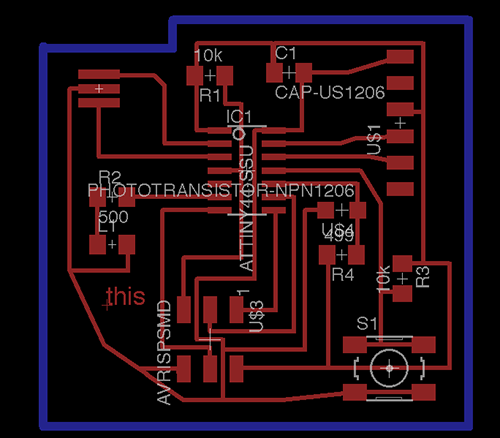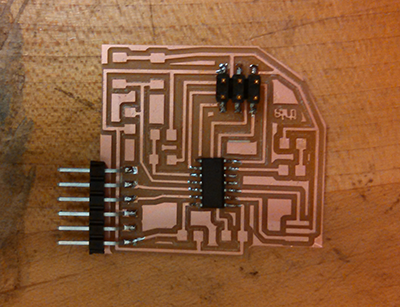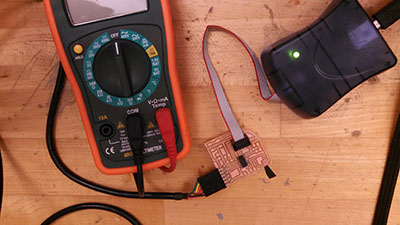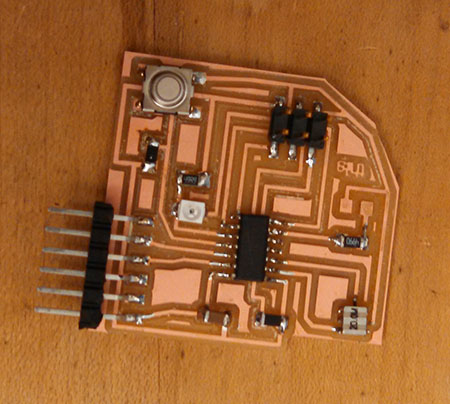


Step 1: Make the Board.
The first step was to make the board, mill the board, stuff
the board and test with voltage meter. as I mentioned
in previous electronic efforts, Prashant who TAed our earlier electronic sessions suggested milling only the three major components first — the micro controller, the FTDI header and the 2 x 3 header. As I stuffed the board, I tested each step with sample code.


Step 2: Test board with voltage meter and stuff the remaining board.
The results turned out fine - which meant I
was ready for a final round of programming.

